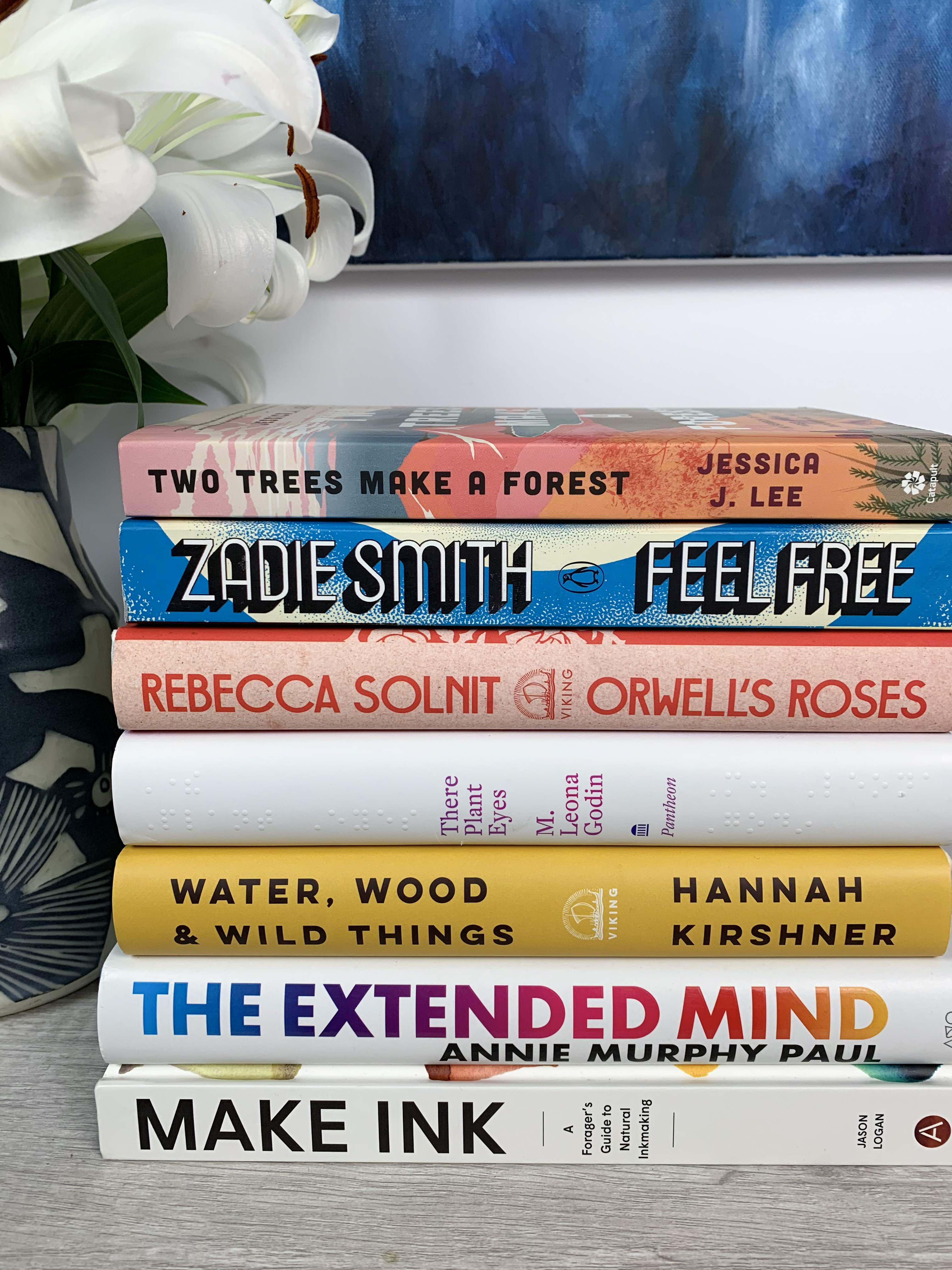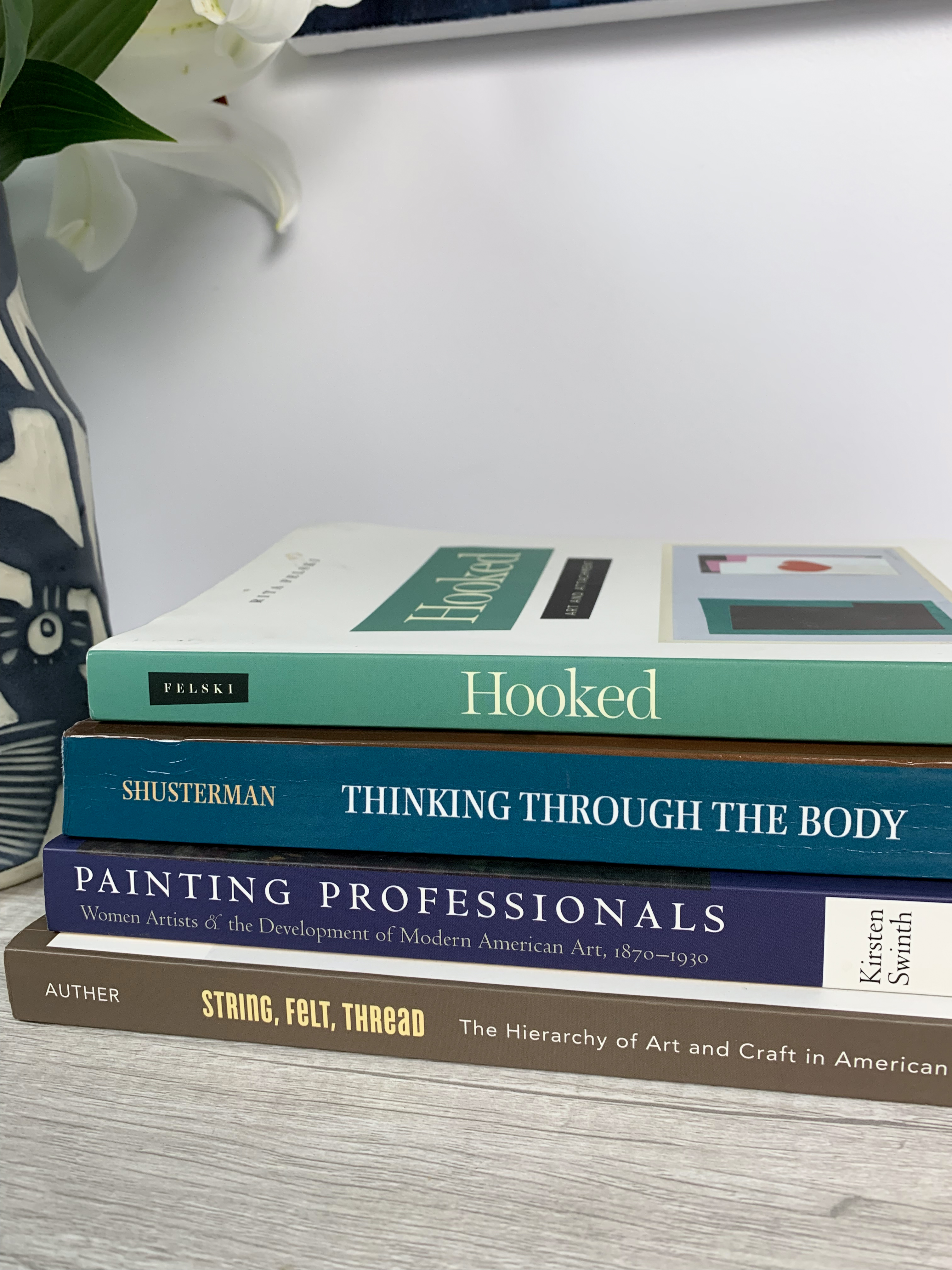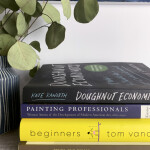
This year, I finished 55 books (which averages to a little over one a week) and started many, many others, so I thought it would be fun to round up some of my favorites. I’ll be honest, there were a lot of books I liked this year, and this list could have easily been longer, but I opted instead to focus on the books that I truly loved and that I would unequivocally recommend to anyone.
And when I applied that lens, I came up with just seven books that I’m calling my favorites of 2021. Not all of these books came out in 2021, but they were all books I read this year, which is why I’m including them on the list.
There Plant Eyes by M. Leona Godin
This was hands down my favorite book of the year, and it makes me sad to not see it on any other year-end, best-of lists. It’s such an incredible, in-depth look at how our culture treats blindness and vision, from the perspective of someone with sight loss. But it’s also well-written, fascinating, and just plain entertaining. Everyone should read it.
Two Trees Make a Forest by Jessica J. Lee
It’s funny that I read my two favorite books of the year in July, and as I mentioned in my post, if I had read Two Trees Make a Forest in any other month, it would have hands down been my favorite. It’s a beautiful blend of nature writing and memoir and an incredible entree into another culture.
The Extended Mind by Annie Murphy Paul
I waited anxiously for this book to be released, and when it did, it did not disappoint. I tore through it, and it has informed so much of my thinking since. In some ways, the findings Murphy Paul shares won’t be surprising to creative people, but it’s nice to see the way we work (which we can often feel ashamed about) backed as scientifically valid.
Water, Wood, & Wild Things by Hannah Kirshner
This is one of two books I read this month that made my best list. While I couldn’t shake the notion that a white woman writing about craft in rural Japan reeks of privilege (something Kirshner herself isn’t shy in pointing out) this is such a beautiful meditation on craftsmanship and experience that it’s worth reading. Not only that, but the world of this book stuck with me, inhabiting my mind long after I finished it.
Feel Free by Zadie Smith
This essay collection by Zadie Smith is a few years old, but I loved every minute of it. In particular, her essay on Joni Mitchell and the idea of audience is one that every creative should read.
Orwell’s Roses by Rebecca Solnit
I love when a book with a seemingly random subject matter just checks all the boxes, and that’s exactly what this book did. While I can’t say I have any real interest in George Orwell, Solnit’s meandering tale of beauty and pleasure and revolution is fascinating, and a good reminder, in these trying times, that we need roses in addition to bread. Basically, it’s an argument (in the most poetic sense) for beauty and art, and I am here for that.
Make Ink by Jason Logan
I fell hard for this book when Amber brought it along on our reading retreat, so much so that I insisted we drive (slightly) out of the way on the way home so I could pick up my own copy. Even if you have no plans to make ink of your own, it’s a gorgeous book full of inspiration, from the beautiful images to the quality of the paper. (I couldn’t stop stroking the pages while reading.) And the essays and recipes are a fascinating dive into the history and use of ink.
My favorite academic books I read this year:

I’m also adding an asterisk to this year’s list by including another four favorite books that I would consider in the category of “academic” writing. Because these books are a little (or in some cases, a lot) denser, I wouldn’t run around recommending them to everyone. But these four were all considerably influential to me this year, and I didn’t want to leave them out entirely.
Thinking Through the Body by Richard Shusterman
If you were to ask me what my least favorite subject is, I would easily answer philosophy, which is a problem, since there’s a huge overlap between philosophy and art writing. But I was willing to overlook this disdain for a book claiming to be about the intersection of the body and aesthetics. And oh, was it worth it. While it does get bogged down in the occasional philosophic argument, this book’s examination of the way our bodies experience art (and the world) had a huge impact on me.
Hooked by Rita Felski
I’m not sure what it says about me that I literally dog-eared almost every page in the first half of this book, but so much resonated with me. While the second half seemed more geared towards writing than visual art, I still loved this book’s explanations into why we do or don’t love particular works of art. (This is also the book that led me to Zadie Smith’s essay on Joni Mitchell.)
Painting Professionals by Kirsten Swinth
This book confirmed so much of what I intuitively knew – that the art world as we know it was created explicitly to exclude women. But Swinth backs up this intuition with cold, hard proof. (While still managing to write in an engaging way.) And while I wish the book would have examined the role that race plays in art world elitism, it’s still an excellent introduction to the problems that persist in the art world to this day.
String, Felt, Thread by Elisa Auther
As someone who went to art school to study craft, I’ve always been keenly aware of the art/craft divide. What I love is the way that Auther explores the role that gender plays in that division. Like Painting Professionals, String, Felt, Thread gives concrete arguments for this division.

Leave a Reply